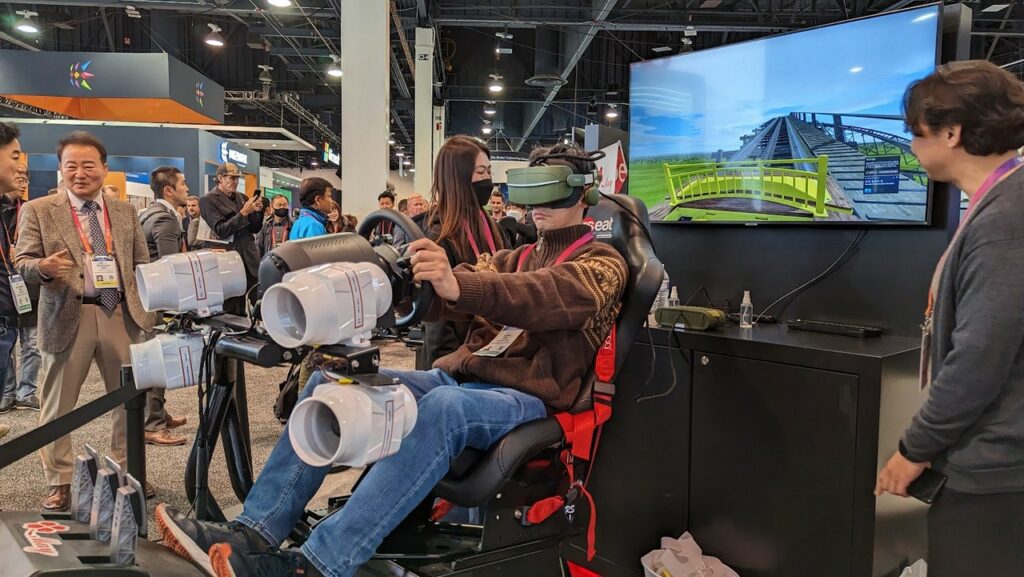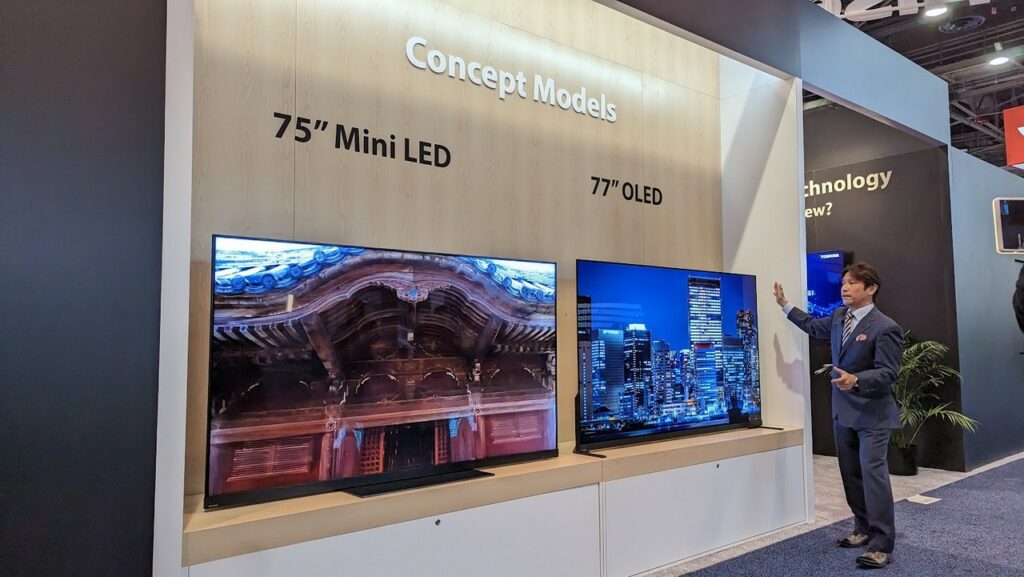For the second year, the Consumer Electronics Show (January 9-12 in Las Vegas) has extended an invitation for Rio Linda Online to come to cruise the show floor, take part in the presentations, and see what’s new in televisions, MP3 players, home electronics, video games, personal computers, and the list goes on and on and on.

How does that relate to the people of Rio Linda and Elverta? Simply stated, The Consumer Electronics Show (CES) is the world’s most significant technology trade show, providing a platform for global brands and innovators to showcase their latest gadgets, products, and innovations.
While CES predominantly focuses on global consumer electronics trends, its implications for local media cannot be underestimated.
In this extensive exploration, we will delve into the multifaceted relationship between CES and the realm of local media, dissecting how the event influences local media outlets, shapes content creation, and impacts the way we consume and engage with information on a regional scale.

- The Evolution of CES
To understand the influence of CES on local media, we must first explore how the event has evolved over the years. CES was initially launched in 1967 in New York City, primarily serving as a platform for introducing new television and radio technology. Since then, it has grown exponentially, relocating to Las Vegas in 1978 and expanding its focus to encompass various consumer electronics categories, including smartphones, home appliances, automotive technology, and more.
In its early days, CES was a crucial event for the local media, particularly those based in New York City. Journalists and broadcasters eagerly covered the latest advancements in television and radio technology, reflecting the local media’s close connection with the electronics industry. As CES evolved and expanded its reach, its significance extended beyond New York, impacting local media outlets across the United States and the world.

- CES and Local Media: The Symbiotic Relationship
CES and local media share a symbiotic relationship, each benefiting from the other’s presence and influence. Here are some key ways in which CES impacts local media:
a. Coverage and Reporting
Local media outlets, whether they are newspapers, television stations, or online publications, send journalists to CES to cover the event. These reporters provide their audiences with firsthand insights into the latest technology trends and innovations. The CES coverage allows local media to maintain relevance in an increasingly tech-centric world, attracting readers and viewers interested in cutting-edge gadgets and developments.
b. Advertising Revenue
CES attracts numerous advertisers and sponsors looking to promote their products and services to a global audience. Local media outlets can capitalize on this influx of advertising revenue by partnering with CES exhibitors or featuring sponsored content related to the event. This financial boost can help support local journalism and news organizations.
c. Engaging Local Audiences
While CES is a global event, its impact resonates with local audiences. Local media outlets use CES coverage as an opportunity to engage their communities, offering insights into how emerging technologies might impact their daily lives. This connection between global tech trends and local relevance is vital for local media’s continued relevance.
d. Innovation and Inspiration
CES serves as a wellspring of innovation and inspiration for local media professionals. It exposes them to the latest storytelling tools and technologies, encouraging innovation in content creation and presentation. As local media outlets embrace new storytelling formats and platforms, they can better engage with their audiences in an ever-evolving media landscape.

- CES Themes and Local Media
Every year, CES introduces a set of overarching themes and trends that shape the consumer electronics industry. These themes not only influence the tech world but also find their way into local media coverage and content creation. Let’s examine how some of these CES themes impact local media:
a. Connectivity and 5G
CES often showcases the latest advancements in connectivity, including 5G technology. Local media outlets recognize the significance of 5G in their communities, as it can lead to faster internet speeds, improved mobile communication, and the proliferation of smart devices. Local reporters cover how these developments impact local businesses, education, and daily life.
b. Smart Home and IoT
The Smart Home and Internet of Things (IoT) categories at CES have witnessed remarkable growth. Local media outlets explore how smart home devices and IoT solutions are making homes more efficient, secure, and convenient. They may also investigate privacy and security concerns related to these technologies, offering guidance to their readers or viewers.
c. Automotive Technology
With the rise of autonomous vehicles and electric cars, CES has become a significant platform for automotive technology innovations. Local media outlets in regions with a strong automotive presence (e.g., Detroit) cover these advancements extensively, examining their implications for local industries, job markets, and transportation infrastructure.

d. Health and Wellness Tech
CES often features innovations in health and wellness technology, from wearable fitness trackers to telemedicine solutions. Local media outlets report on how these technologies are impacting healthcare delivery in their communities, particularly in rural or underserved areas.
e. Education and EdTech
The education sector has not been immune to CES’s influence, with EdTech becoming a prominent category. Local media outlets explore how educational institutions in their region are adopting technology to enhance learning experiences, bridging the digital divide, or addressing educational challenges unique to their community.
f. Sustainability and Green Tech
Sustainability and environmental consciousness are recurring themes at CES. Local media outlets, especially in regions with strong environmental interests, investigate how green technologies and eco-friendly practices are being adopted locally. They may also highlight initiatives aimed at reducing the environmental footprint of businesses and municipalities.

- Local Media’s Role in CES Coverage
Local media outlets play a crucial role in providing a unique perspective on CES. They bring a regional focus to the global event, offering insights and analyses that resonate with local audiences. Here are some ways local media can enhance their CES coverage:
a. Regional Impact Assessment
Local media can assess how CES trends and innovations directly impact their region. This may involve interviewing local business leaders, educators, healthcare professionals, and government officials to gauge the practical implications of emerging technologies.
b. Human Interest Stories
While CES often highlights cutting-edge gadgets and products, local media can humanize the event by featuring stories of local innovators and entrepreneurs who have made significant contributions to the consumer electronics industry. These human interest stories add a personal touch to CES coverage.

c. Community Engagement
Local media can involve their audience in CES coverage by soliciting questions or topics of interest from their readers or viewers. This interactive approach allows local audiences to actively participate in the coverage and ensures that their specific concerns are addressed.
d. Expert Analysis
Local media outlets can invite local experts and analysts to provide insights and analysis on CES trends. This not only showcases the expertise within the community but also offers a valuable perspective on how global tech developments relate to the local landscape.

- The Future of CES and Local Media
As CES continues to evolve and adapt to changing technological landscapes, its influence on local media will likely intensify. Here are some predictions for the future of CES and its impact on local media:
a. Hybrid Events
In response to the COVID-19 pandemic, CES and other large-scale events have incorporated virtual components. This hybrid approach is likely to persist, allowing local media to cover CES even more comprehensively by combining on-the-ground reporting with virtual access to exhibitors and events.
b. Increased Local Collaboration
Local media outlets may forge partnerships with CES organizers and exhibitors to enhance their coverage. Collaborations can include exclusive interviews, behind-the-scenes access, and sponsored content opportunities that benefit both parties.
c. AI-Driven Reporting
Advancements in artificial intelligence (AI) and data analytics will enable local media to analyze CES trends and audience interests more effectively. AI can help tailor CES coverage to meet the specific needs and preferences of local audiences.
d. Expanded Content Formats
Local media outlets will continue to diversify their content formats to engage audiences across various platforms. This may include immersive experiences, live streaming, augmented reality (AR), and virtual reality (VR) content related to CES.
e. Community Tech Hubs
In regions where CES has a significant impact, local media outlets may establish community tech hubs or innovation centers. These spaces can serve as incubators for local startups, offer tech education programs, and host events that bridge the gap between CES and the local community.

Conclusion
CES has transcended its origins as a technology trade show to become a global phenomenon that influences consumer electronics trends, innovation, and the media landscape. Its impact on local media is profound, shaping how local outlets engage with their communities and report on technological advancements. As CES continues to evolve and adapt, so too will its relationship with local media, ensuring that both entities remain vital players in the ever-changing world of technology and journalism.














